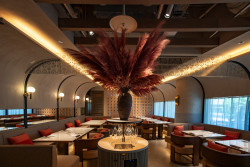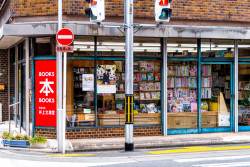
Originally published on metropolis.co.jp on September 2009

Zarigani$ at Zher the Zoo in Yoyogi
Photos by Kevin Mcgue
As the concert builds to its climax, the lead singer climbs atop a throbbing kick drum, precariously balancing on her high heels, all the while not missing a beat with the driving guitar riff. When the song comes to a close, she leaps backwards, her head missing the beer-stained ceiling by mere centimeters as the final chord is struck midair. The landing would be perfect were it not for a malfunctioning guitar strap, and her instrument falls to the stage with a thud followed by a shower of ear-splitting feedback. But she recovers, kicks aside her guitar, knocks over a microphone stand, and exits the stage.
A moment later she’s back, seemingly transformed into another person—the star performer now functioning as her own roadie, spooling guitar cables and packing gear away. Soon after, she’s standing at the bar, where a first-time audience member congratulates her on a great show and buys her a beer. Later, the fan joins the band’s entourage for an after-show meal at a nearby izakaya.
This scene could never happen at Summer Sonic or Fuji Rock, where armies of security guards are deployed to keep fans away from musicians. Yet such intimate encounters between music makers and music lovers occur every night in the many “live houses” that dot the Japanese music map. Cramped, smoky, nondescript concrete boxes hidden away in basement floors below restaurants or shops, live houses are the birthplace of a Japanese subculture which is quite literally underground, but is set to take its place on the world stage.







